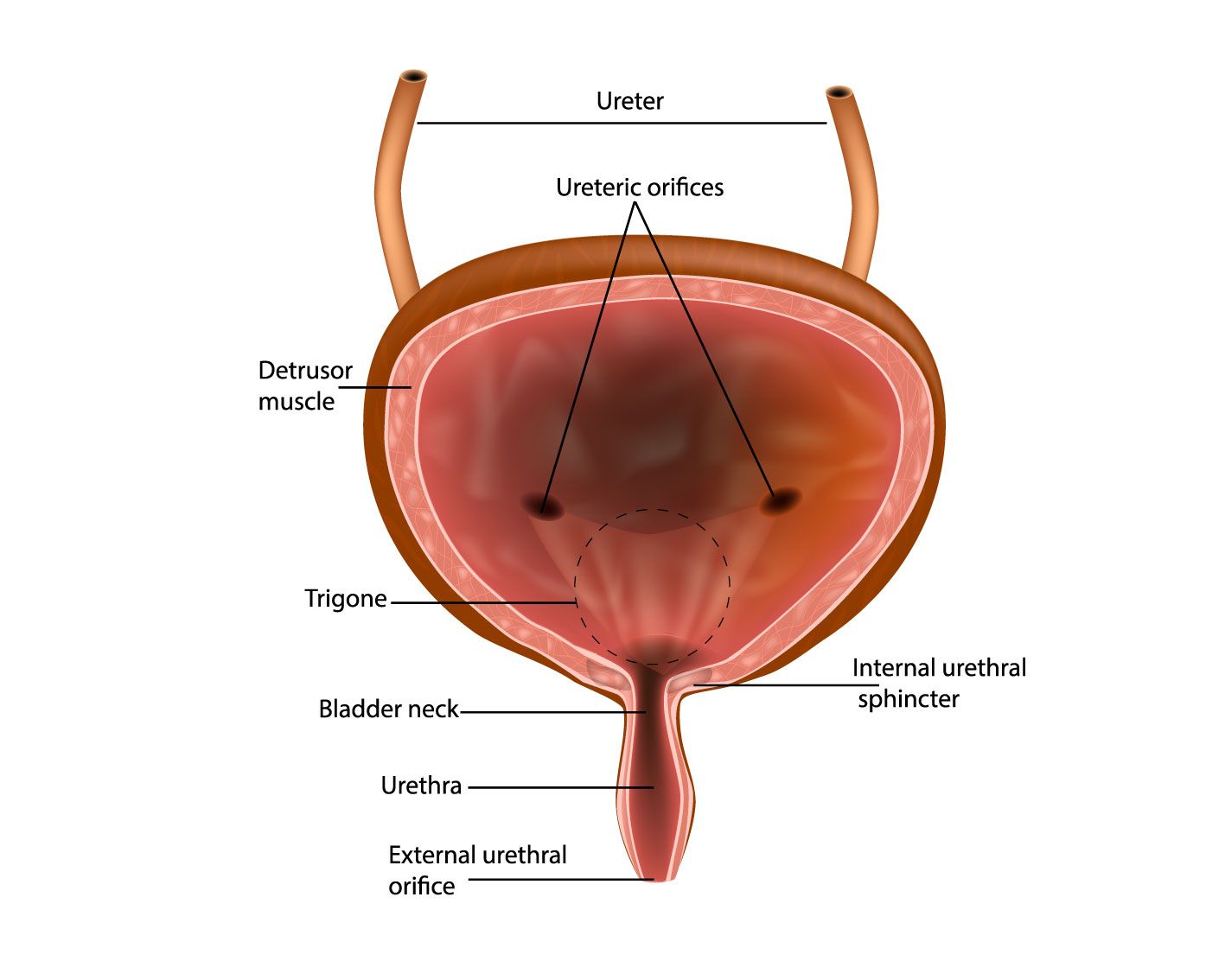What is botulinum toxin type A?
Botulinum toxin type A (commonly known as Botox®) is an injectable medicine that can be used to help muscles relax. It can be injected into the urinary sphincter (the muscle that controls the flow of urine) to relax the muscles in the area and allow urine to empty from the bladder. During the injection procedure, a surgeon inserts a special tube with a camera (called a cystoscope) into the urethra to inject the botulinum toxin into the urinary sphincter. The procedure can be done under nitrous oxide sedation if needed.

Why inject botulinum toxin type A into the urinary sphincter?
Botulinum toxin type A can be used to treat overactive urinary sphincter muscles. Many patients with tight urinary sphincter muscles have difficulty relaxing those muscles to allow urine to pass out of the bladder. Tight urinary sphincter muscles can also make it difficult to insert a catheter. This muscle tension may cause you to be unable to completely empty your bladder. When injected, botulinum toxin type A blocks signals from the brain to the bladder muscles, which helps sphincter muscles to relax. This relaxation can help allow the passage of urine out of the bladder or make it easier to put in a catheter.
What should I expect before the injection procedure?
A member of Gillette Children's scheduling team will contact you with specific directions about how to get ready for your procedure. These instructions will include whether a pre-procedure urine test at your primary care provider's office is needed and whether there are any medications you will need to take before the procedure. If you will be given nitrous oxide before your procedure, please follow the directions for when to stop eating and drinking exactly.
Please contact the Urology team if you have any questions about your upcoming procedure.
What should I expect after the injection procedure?
After the injection procedure, the urinary sphincter may be irritated. This irritation may cause pink-colored urine, which should go away within 24 hours. Drink plenty of water after your procedure. You can return to normal activities the next day.
Some people notice the effects of the botulinum toxin type A injection within a couple of weeks, with the highest effectiveness a month after the procedure. Effective injections let the urinary sphincter relax when urinating, resulting in less urine staying in the bladder. Sometimes, the urinary sphincter becomes too relaxed from the injections, and you may experience urinary incontinence or leakage. This will eventually rgo away as the botulinum toxin wears off. The effects of a botulinum toxin injection usually last 4-6 months but may last longer. Your provider will determine if you need repeat injections.
Your urologist may instruct you to change your bladder medications or routine following an injection procedure.
When should I call my urology provider?
Call your urology provider immediately if you experience any of these symptoms following your procedure:
- Large amounts of blood in your urine
- Muscle weakness
- Difficulty breathing
Your Care Team
Regular follow-up after this procedure is important. Please attend your follow-up appointments with your urology provider so they can monitor your bladder health. Please call Gillette Telehealth Nursing (651) 229-3890 or contact Gillette Children's Urology team if you have any questions or concerns.
This information is for educational purposes only. It is not intended to replace the advice of your health care providers. If you have any questions, talk with your doctor or others on your health care team. If you are a Gillette patient with urgent questions or concerns, please contact Telehealth Nursing at 651-229-3890.
